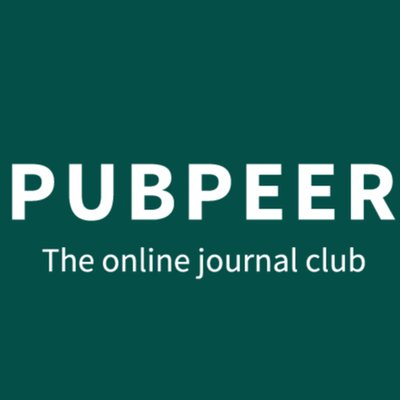
Science has issued an expression of concern for a paper it published earlier this summer after readers pointed out suspect images in the work.
The July 10 article, titled “Proton transport enabled by a field-induced metallic state in a semiconductor hetero-structure,” came from a group in China and the United Kingdom. The corresponding authors were Bin Zhu and Huaibing Song, of China University of Geosciences in Wuhan. Zhu also is affiliated with the Southeast University School of Energy and Environment in Nanjing.
Shortly after publication, data-sleuth Elisabeth Bik posted on PubPeer that she’d been alerted by a reader to potential problems with two of the figures in the paper:
Figure S10 of this paper (left) appears to look very similar to Figure 8b of a previous paper with some shared authors (right), i.e. Rong Xu et al. IJ Hydrog Energy (2017), doi: 10.1016/j.ijhydene.2017.05.218.
And:
The same reader also attended me to a possible similarity between Figure S9b of this paper (shown left) and Figure 8 of another paper with shared authors (shown right), i.e. Liang Liu et al. IJ Hydrogen Energy (2018), doi: 10.1016/j.ijhydene.2018.03.184.
Figure S9b of this paper shows an additional line at 430 degrees not present in the 2018 figure but otherwise the graphs look similar.
From the legends, the compounds tested in either paper appear to be different. Could the authors please clarify the similarities between these two figures? Were these showing the same measurements?
Another PubPeer user wrote:
Agree with your finding. I did an illustration by superimposing a semi-transparent inverted fig 8a from the 2017 paper over the fig S10 of the 2020 paper. It appears quite clear that they are almost a perfect match after scaling down the width of the fig 8a to 95%.
Additionally, I looked at their scale bars. Taking the 100um bar as a true 100, then the 500um bar is only a bit shy of 250. Does it mean that at least one of the images was not used at its actual size?
Appreciate if the authors can explain.
The authors have not responded to those calls for clarification. But Science says it is looking into the issues:
On 10 July, Science published the Report “Proton transport enabled by a field-induced metallic state in a semiconductor hetero-structure” by Y. Wu et al. After publication, Science received emails from two independent sources alleging that figures S9B and S10 in this paper appeared to be manipulated copies of figures previously published by the same corresponding author, Bin Zhu, in two papers that reported different fuel cell compositions. The allegations were subsequently posted to PubPeer. While Science awaits clarification from investigations by the authors’ institutions, we are notifying readers of our concern about the paper’s data integrity.
We emailed Zhu and Song for comment but have not heard back.
Bik told us:
I would not have found this myself. Those duplications between papers are much harder to find, unless one scrolls through all papers by the same group and have a good memory.
But once it was pointed out to me that the photo and a graph had been duplicated from two previous papers from the same group, it was obvious to me and I agreed this was a duplication. It looked as if someone else had tried to post something about this paper previously because there was a moderated comment on PubPeer. So I posted it on PubPeer myself. I did not write to Science yet.
Bik, who said she didn’t notify Science about the paper, added that the time between her PubPeer post and the expression of concern was:
one of the fastest responses from a journal I have ever experienced, not considering the sudden complete disappearance of some papers from predatory or borderline-predatory journals.
This is how an Expression of Concern should be used; a very fast way to signal to readers that there has been some serious concerns raised about the paper, while the journal can start an investigation and ask the authors to respond. I am glad to see a journal react to PubPeer comments so promptly.
Like Retraction Watch? You can make a tax-deductible contribution to support our work, follow us on Twitter, like us on Facebook, add us to your RSS reader, or subscribe to our daily digest. If you find a retraction that’s not in our database, you can let us know here. For comments or feedback, email us at [email protected].
In fact, Bin Zhu does not work in UK. He is a Professor in KTH Royal Institute of Technology in Stockholm